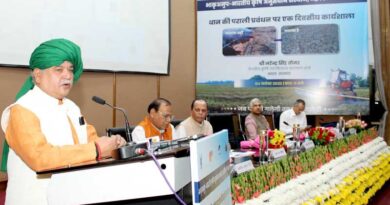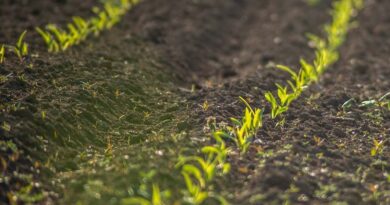Government Schemes raise farmers’ incomes
03 August 2022, New Delhi: Government implements several developmental programmes, schemes, reforms and policies for the welfare of farmers by modernizing and rationalizing use of inputs so as to decrease cost, increasing crop production, remunerative returns and income support, which have been able to augment income of farmers directly or indirectly. These include:
- Supplementary income transfers under Pradhan Mantri Kisan Samman Nidhi (PM-KISAN) Scheme,
- Pradhan Mantri Kisan Maan Dhan Yojana (PM-KMY) for providing old age pension,
- Crop insurance under Pradhan Mantri Fasal Bima Yojana (PMFBY),
- Increase in Minimum Support Price (MSPs) for all Kharif & Rabi crops,
- Soil Health Cards for rationalizing use of fertilizers,
- ‘Per drop more crop’ initiative through drip/sprinkler irrigation for optimal utilization of water, reducing cost of inputs and increasing productivity,
- Paramparagat Krishi Vikas Yojana (PKVY) for promoting organic farming,
- e-NAM initiative for transparent and competitive online trading platform,
- Agro-forestry through ‘Har Modh Par Ped’ for additional income,
- National Bamboo Mission to promote bamboo plantation on non-forest government as well as private land and emphasis on value addition, product development and markets,
- New procurement policy under Pradhan Mantri Annadata Aay Sanrakshan Abhiyan (PM-AASHA) for ensuring remunerative prices for produce,
- Bee-keeping under Mission for Integrated Development of Horticulture (MIDH) to increase productivity of crops through pollination and increase in honey production as an additional source of income,
- Ensuring flow of adequate institutional agriculture credit and benefit of interest subvention,
- Kisan Credit Cards (KCC) offering production loan to even dairy & fishery farmers besides agricultural crops,
- Better access to irrigation under Pradhan Mantri Krishi Sinchai Yojana (PMKSY),
- Formation and promotion of 10,000 FPOs,
- Special attention for creation of infrastructure through Agri Infrastructure Fund (AIF) with a size of Rs. 100,000 crore,
- National Mission for Sustainable Agriculture (NMSA), which aims to evolve and implement strategies to make Indian agriculture more resilient to the changing climate.
- Focus on application of digital technology at all stages of agricultural value chain.
- Adoption of drone technologies in agriculture which has a potential to revolutionize the Indian agriculture, etc.
Since agriculture is a State subject, all the above schemes / programmes are implemented in close coordination with the State Governments. Government supports these schemes by providing higher budgetary allocation, non-budgetary financial resources such as creating Corpus Funds like Micro Irrigation Fund, Agriculture Infrastructure Funds, PM Matasya Sampada Yojana, Animal Husbandry Infrastructure Development Fund and formation of FPOs, Gramin Agriculture Markets etc. Further, due to implementation of these schemes there is record production in foodgrain as well as in horticulture. Also the country has witnessed emphatic growth in export of agri and allied commodities. All these have been possible due to unprecedented enhancement in budget allocation for agriculture from Rs. 27662.67 crore in 2013-14 to to Rs. 1,32,513.62 crores in 2022-23. According to current Economic Survey, agriculture and allied sectors grew at a positive growth rate of 3.6 per cent during 2020-21.
In the above connection, it is also stated that the Ministry of Statistics and Programme Implementation [National Statistical Office (NSO)] conducted a Situation Assessment Survey (SAS) of Agricultural Households during NSS 70th round (January 2013- December 2013) with reference to the agricultural year July 2012- June 2013 and during NSS 77th round (January 2019- December 2019) with reference to the agricultural year July 2018- June 2019 in the rural areas of the country. From these surveys, estimated average monthly income per agricultural household as obtained from NSS 70th round (2012-13) and NSS 77th round (2018-19) were calculated as Rs.6426/- and Rs.10,218/- respectively.
The efforts of Government for positive implementation of these schemes are, therefore, yielding good results and the income of the farmers is improving. As part of the ‘Azadi ka Amrit Mahotsav’, Indian Council of Agricultural Research (ICAR) has released a book, which contains compilation of success stories of 75,000 farmers out of innumerable successful farmers whose incomes have increased more than two times.
Also Read: Top 7 Tractors in India from 20 HP to 60+ HP















